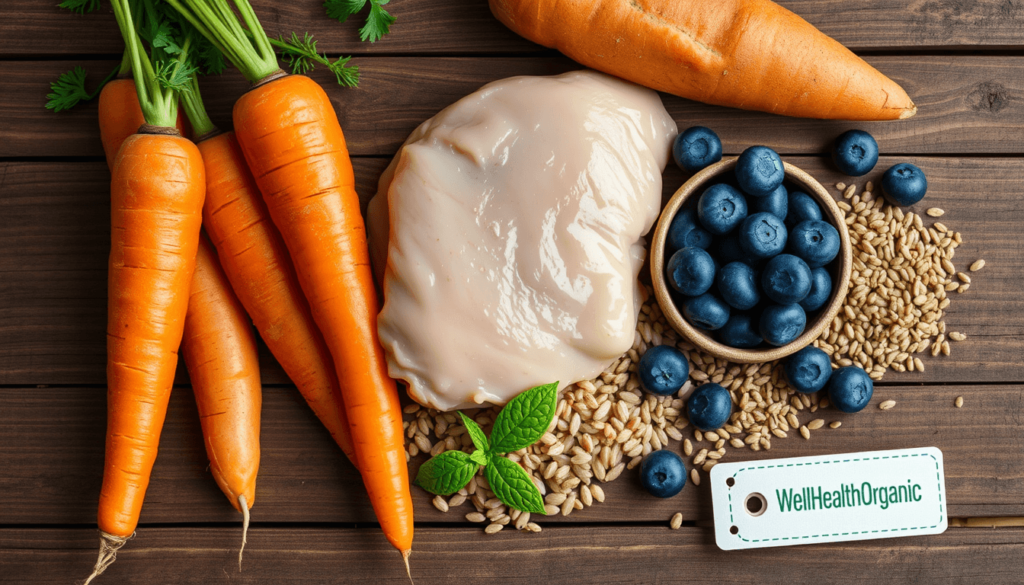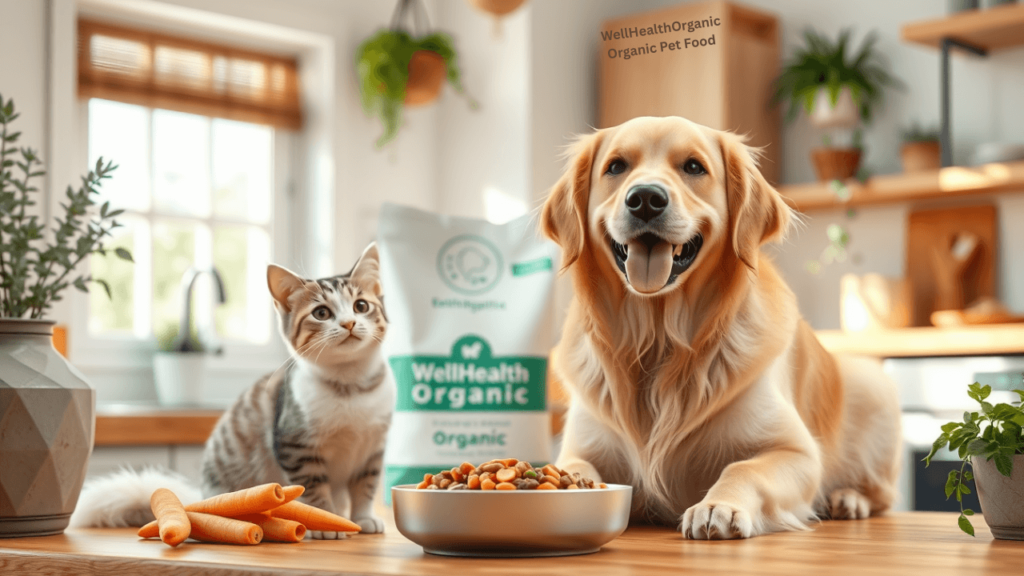If you’ve ever stood in the pet food aisle feeling overwhelmed by ingredient lists you can’t pronounce or labels claiming “all-natural” without much explanation, you’re not alone. As pet parents, we want the best for our furry companions—but how do we know what’s best?
That’s where WellHealthOrganic organic pet food benefits come into play. Unlike regular commercial brands, this kind of pet food goes beyond just filling your dog or cat’s stomach—it nourishes them from the inside out. But what makes it different? And is it really worth the switch?
Let’s dig in.
What Is Organic Pet Food—and What Makes WellHealthOrganic Stand Out?
Organic pet food is made from ingredients grown without synthetic pesticides, herbicides, artificial additives, or genetically modified organisms (GMOs). It mirrors the way nature intended food to be consumed—pure, wholesome, and safe.
WellHealthOrganic takes this a step further. Their pet food range is designed not only to meet your animal’s nutritional needs but also to enhance their overall well-being. The ingredients are responsibly sourced, certified organic, and minimally processed.

Why Pet Owners Are Switching to Organic Food
Many pet parents start looking into organic options because of recurring issues like digestive troubles, itchy skin, low energy levels, or unexplained allergies. If any of these sound familiar, it might be time to look at what’s going into your pet’s bowl.
1. Fewer Allergies and Sensitivities
Pets can be sensitive to artificial colors, preservatives, and fillers. Organic foods like those from WellHealthOrganic avoid these completely, making allergic reactions far less likely.
2. Better Digestion
Ingredients are clean and often more easily digestible. No cheap cornmeal or by-products—just real meat, vegetables, and grains.
3. Shinier Coats and Healthier Skin
Organic ingredients packed with natural fatty acids and vitamins help improve coat shine and skin health over time.
4. More Energy and Vitality
Pets on organic diets often show increased energy, playfulness, and alertness—especially noticeable in aging dogs and cats.
5. Ethical and Sustainable
WellHealthOrganic’s food supports environmentally friendly farming practices, humane animal treatment, and transparent sourcing.
A Real-Life Scenario
I remember when my Labrador, Simba, began showing signs of food-related issues—constant itching, low energy, and stomach upsets. Vet visits gave temporary relief, but the problem always returned. That’s when I discovered WellHealthOrganic organic pet food. Within weeks, Simba’s energy returned, his coat grew shinier, and those vet visits became a rare occasion.
Advantages of WellHealthOrganic Organic Pet Food
Let’s break down what you gain by choosing this for your pet:
- Certified Organic Ingredients: Free from harmful chemicals and GMOs
- Transparency: Clear labeling, no mystery ingredients
- Natural Taste: Pets love the flavor because it’s real food
- No Fillers: Every ingredient serves a nutritional purpose
- Improved Immunity: Nutrient-dense meals help boost your pet’s natural defenses

Potential Disadvantages to Keep in Mind
No food is without its cons—even if it’s organic.
- Higher Cost: Organic pet food usually costs more than standard options
- Limited Availability: Depending on where you live, it may not be stocked in local stores
- Transition Period: Switching foods might take some adjustment time for your pet’s digestive system
- Shorter Shelf Life: With fewer preservatives, it might not last as long as conventional brands
What I Would Do Differently Now
Looking back, I wish I hadn’t waited until Simba had recurring issues before making the switch. If I could rewind, I’d start with WellHealthOrganic pet food from day one. Prevention, especially with nutrition, is so much easier—and cheaper—than cure. Trusting organic options early could have saved a lot of stress (and vet bills).
Is Organic Pet Food Really Worth It?
If you’re looking at pet food purely by price, organic may seem like a luxury. But if you view it as an investment in your pet’s health and longevity, it makes far more sense. The benefits stack up: fewer health problems, better quality of life, and potentially longer life spans.
Key Ingredients in WellHealthOrganic Pet Food
To better understand what makes it superior, here’s a look at some commonly included ingredients:
- Organic Chicken or Beef: Clean, protein-rich, and hormone-free
- Brown Rice or Quinoa: Easily digestible carbohydrates
- Sweet Potatoes and Carrots: Rich in fiber and beta-carotene
- Blueberries and Cranberries: Natural antioxidants
- Flaxseeds and Fish Oils: For shiny coats and heart health

FAQs About WellHealthOrganic Organic Pet Food
Q1: Can I switch to organic pet food immediately?
A: It’s best to transition over 7–10 days, mixing increasing amounts of organic food with your current food.
Q2: Is WellHealthOrganic suitable for all breeds and ages?
A: Yes, but they also offer specific formulas tailored for puppies, seniors, and different activity levels.
Q3: How can I tell if my pet is benefiting from the change?
A: Look for signs like improved stool, better coat condition, more energy, and fewer allergic reactions.
Q4: Is this food vet-recommended?
A: While individual vets may differ, many holistic vets advocate for organic diets—especially those with clean, transparent ingredient lists like WellHealthOrganic.
Q5: Where can I buy it?
A: You can find it online through the official WellHealthOrganic website or select natural pet food stores.
Final Thoughts
Feeding your pet is more than a daily chore—it’s a reflection of your love and care. With WellHealthOrganic organic pet food benefits, you’re not just filling a bowl; you’re making a conscious choice to support your pet’s health naturally.
If you’ve ever questioned whether what you’re feeding your dog or cat is the best it can be, now is a great time to make the switch. Your pet will thank you with brighter eyes, a wagging tail, and years of vibrant companionship.
If you’re a cat owner curious about natural remedies, you should read our guide on Essential Oils and Cats to learn what’s safe and what to avoid.
